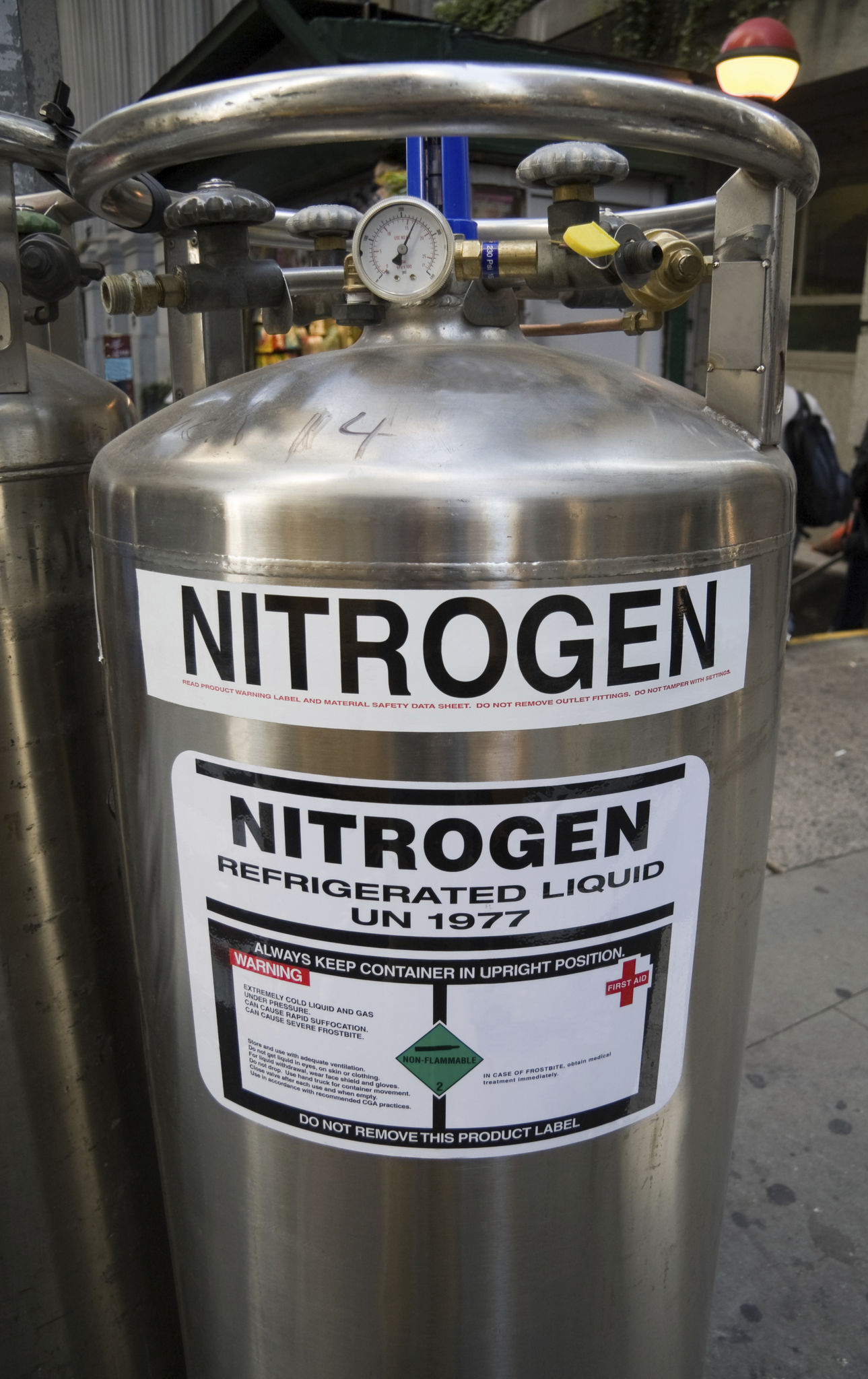How to Safely Handle Nitrogen and Liquid Nitrogen at Your Facility
Introduction to Nitrogen and Liquid Nitrogen
Nitrogen is a colorless, odorless gas that makes up about 78% of the Earth's atmosphere. In its liquid state, nitrogen is extremely cold, with a boiling point of -196°C (-320°F). The unique properties of nitrogen and liquid nitrogen make them invaluable in various industrial and scientific applications. However, handling these substances requires caution and adherence to safety protocols to prevent accidents and injuries.

Understanding the Hazards
Both nitrogen gas and liquid nitrogen pose specific hazards. Nitrogen gas can displace oxygen in the air, leading to asphyxiation if inhaled in high concentrations. Liquid nitrogen, due to its extreme cold, can cause severe frostbite or cryogenic burns upon contact with skin. Additionally, rapid vaporization of liquid nitrogen can result in pressure build-up, posing explosion risks if not properly managed.
Asphyxiation Risks
In environments where nitrogen gas is used or stored, it's crucial to ensure proper ventilation. As an inert gas, nitrogen does not support life, and high concentrations can lead to oxygen displacement. Installing oxygen sensors and alarms can help monitor air quality and provide early warnings in case of leaks.

Safe Handling Practices
Implementing safe handling practices is essential for minimizing risks associated with nitrogen and liquid nitrogen. Personnel should be well-trained and equipped with the necessary personal protective equipment (PPE) when working with these substances.
Personal Protective Equipment (PPE)
Ensure that all staff handling liquid nitrogen wear appropriate PPE, including insulated gloves, face shields, and lab coats. Insulated gloves are particularly important as they protect against the extreme cold that can cause frostbite.
- Wear insulated gloves to prevent skin contact.
- Use face shields or goggles to protect eyes from splashes.
- Don lab coats or aprons to shield clothing from spills.
Storage and Transportation
Proper storage and transportation of nitrogen and liquid nitrogen are critical for safety. Store these substances in well-ventilated areas away from direct sunlight and heat sources. Use containers specifically designed for cryogenic liquids, ensuring they are secure and labeled correctly.

Emergency Procedures
Despite taking precautions, emergencies can still occur. Having an emergency response plan in place is vital for addressing any incidents involving nitrogen or liquid nitrogen. This plan should include steps for evacuating personnel, administering first aid, and notifying emergency services.
First Aid Measures
In case of exposure to liquid nitrogen, immediately remove affected clothing and immerse the injured area in lukewarm water. Do not use direct heat or rub the affected area, as this can cause further damage. Seek medical attention promptly.
- Remove contaminated clothing immediately.
- Immerse affected skin in lukewarm water.
- Avoid rubbing or applying direct heat to the skin.
- Contact medical services promptly.
Conclusion
Handling nitrogen and liquid nitrogen safely is paramount to protecting personnel and maintaining a secure work environment. By understanding the hazards, implementing proper safety measures, and preparing for emergencies, facilities can effectively manage the risks associated with these substances. Regular training and adherence to safety protocols should be a priority for all involved in handling nitrogen and liquid nitrogen.
